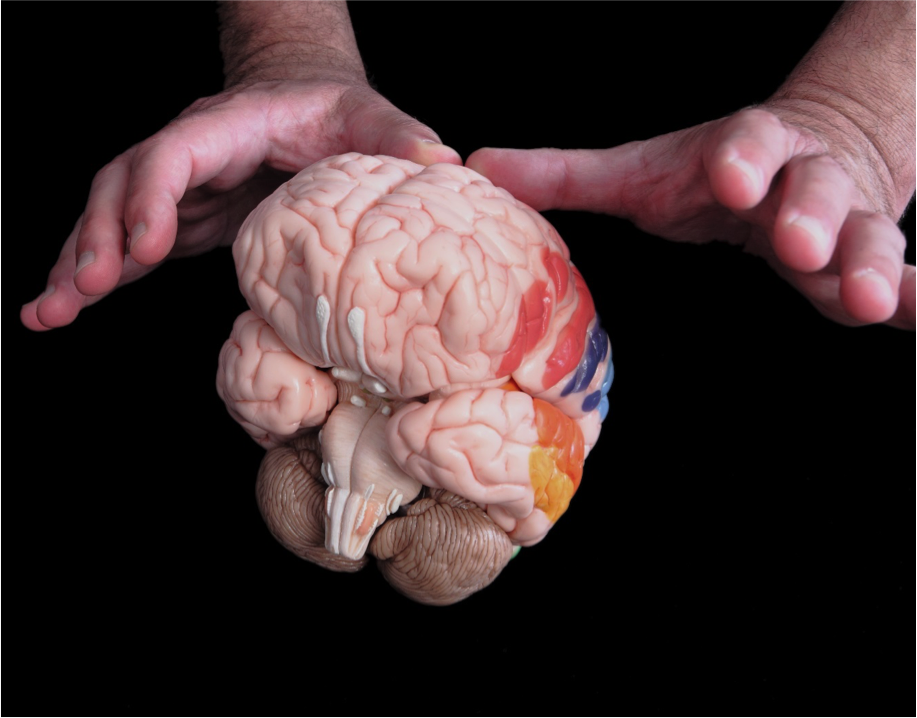It is interesting to notice that, in much of the basic training, education is essentially based on gathering and exploring anatomopathological data. In fact, we see in our clinic patients who have anatomopathological lesions with little or no pain[1] but also, patients without anatomical lesions who are however in great pain[2].
This is even more true in the case of the shoulder[3].
Current literature teaches us that a diagnosis based on anatomopathological data may not always be necessary, except in the search for red flags[4], to care for a population of patients presenting with shoulder pain unrelated to trauma. We must therefore base our diagnosis on functional data to improve our therapeutic objectives and our results.
As osteopaths, our gateway in this functional health history, is observation, analysis and understanding of the movement of the scapular girdle using current data[5]. Indeed, the rotator cuff, by pre-activating just before movement, plays an important proprioceptive role, but also a stabilising role while providing a mobilising role during movement[6].
Furthermore, the orthopedic tests of the cuff are not that specific[7]; which comforts us in choosing a functional approach that, in other aspects, may complete our diagnosis:
highlighting motor strategies that are unclear and different due to a proprioceptive deficit that is characteristic for patients suffering from shoulder pain[8],
integration of muscular chains or kinematic chains influencing the movement of the scapular girdle through increasing or decreasing constraints[9],
integration of a physiological concept of positional and movement asymmetry so as not to distort our conclusions (Lehman G., 2017 ; concept Burnotte J.)
Functional evaluation as we understand it presents a number of benefits.
Better understanding the biomechanics and the kinematics of the shoulder to be able to categorise our patients suffering from a shoulder problem according to their major[10] and to better target our therapeutic objectives.
Establish a prognosis of the shoulder problem according to the good or bad risk factors.
See if the osteopathic treatment significantly improves the functional aspect of the shoulder[11].
Promote a therapeutic alliance with the patient and a cognitive restructuring based on the patient’s expectations.
Give simple advice and a few kinetic reprogramming exercises to optimise the result of the osteopathic treatment.
If needed, redirect the patient to a multidisciplinary therapeutic approach (physiotherapy, rheumatology, surgery, etc.) while preserving our specificity as an osteopath.
It must be noted that, even though the functional evaluation is necessary, it does not replace osteopathic diagnosis. Osteopathic diagnosis is based on the osteopathic lesions present which may only be identified by specific tests. We must not confuse finding the dysfunctions (functional evaluation) with finding of the osteopathic lesions (specific tests).
[1] Guermazi A. et al, Prevalence of abnormalities in knees detected by MRI in adults without knee osteoarthritis: population based observational study (Framingham Osteoarthritis Study), BMJ 2012; 345:e5339.
[2] Brinjikji W. et al, Systematic literature review of imaging features of spinal degeneration in asymptomatic populations. American Journal of Neuroradiology, 36(4), 811-816. Doi:10.3174/ajnr.A4173, 2015.
[3] Teunis T. et al, A systematic review and pooled analysis of the prevalence of rotator cuff disease with increasing age, Journal of shoulder and elbow surgery, Volume 23, Issue 12, p1913-1921, 2014
[4] Critical elements which would suggest a contraindication to osteopathic treatment.
[5] In particular the concept of dynamic stability of this girdle as well as of the rotator cuff, which is essential.
[6] Reed D. et al, Does changing the plane of abduction influence shoulder muscle recruitment patterns in healthy individuals? Man Ther. 2016 Feb; 21:63-8.
[7] Dean, B.J.F. et al, Why does my shoulder hurt? A review of the neuroanatomical and biochemical basis of shoulder pain. BJSM, 47(17), 2013.
- Dean B.J.F. et al, Are inflammatory cells increased in painful human tendinopathy? A systematic review Br J Sports Med; 50:216-220, 2016.
- Lewis J. et al, Rotator Cuff Tendinopathy: Navigating the Diagnosis- Management Conundrum. J Orthop Sports Phys Ther. Nov; 45(11):923-37, 2015.
- Lewis, J., Rotator cuff related shoulder pain: Assessment management and uncertainties. Manual Therapy, 23, pp.57–68, 2016.
- Hegedus E.J. & Cook, C.E. Return to play and physical performance tests: evidence-based rough guess or charade, BJSM, 49(20), 2017.
- Hegedus E.J. et al. Combining orthopedic special tests to improve diagnosis of shoulder pathology. Physical Therapy in Sport, 16(2), pp.87–92, 2015.
[8] Castelein B. et al, The influence of induced shoulder muscle pain on rotator cuff and scapulothoracic muscle activity during elevation of the arm. J Shoulder Elbow Surg. 2017 Mar; 26(3): 497-505.
[9] Kibler W. et al, Clinical implications of scapular dyskinesis in shoulder injury: the 2013 consensus statement from the “Scapular Summit”. BJSM, 47(14), pp.877–885, 2013.
- Roy J. et al, Impact of movement training on upper limb motor strategies in persons with shoulder impingement syndrome. Rehabilitation, Therapy & Technology, 11:1–11, 2009.
[10] Lewis J, Rotator cuff related shoulder pain: Assessment management and uncertainties. Manual Therapy, 23, pp.57–68, 2016.
[11] Thus the usefulness of performing a functional evaluation before and after the osteopathic treatment to appreciate the result of our corrections.





